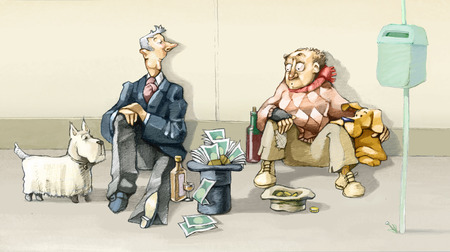Application Exercise 10m Effects of inequality and poverty

- Describe the link between poverty and health
Increases in poverty tend to worsen health outcomes.
- Describe the link between poverty and educational
Increases in poverty tend to worsen educational outcomes.
- Explain how one can demonstrate the relationship between poverty and health/educational
To demonstrate this relationship, one can seek to find a correlation between two variables. For example, linking family income with the health status of the people of subjects relying on that income. For example, it is likely to be the case that lower levels of family income will be associated with relatively lower health outcomes.
- Describe the link between poverty, productivity and economic
Higher levels of poverty tend to worsen health outcomes (e.g. a higher incidence of mental health issues) and therefore contribute to lower levels of productivity. Lower levels of productivity will then tend to make economic stability (evidenced by strong rates of economic and employment growth combined with low rates of inflation) more difficult to achieve.
- Explain what is meant by ‘segregation’ at
Segregation at schools implies that students from high income families attend one school and students from low-income families attend a separate school.
- Describe the link between school segregation and
School segregation is likely to perpetuate or even worsen inequality given that students from disadvantaged households will be less able to enjoy the possible economic benefits associated with exposure to students from less disadvantaged households/ more advantaged households. This makes it more likely (but by no means certain) that students from disadvantaged schools will achieve lower education outcomes, which negatively impacts on their productivity and income earning potential in the longer term.
- Explain why the author suggests that inequality may cause a net reduction in educational
This is because the negative effects that stem from poor children, or those from disadvantaged households, associating with other less advantaged children exceed the positive effects of affluent children, or those from more privileged households, associating with other advantaged children.
